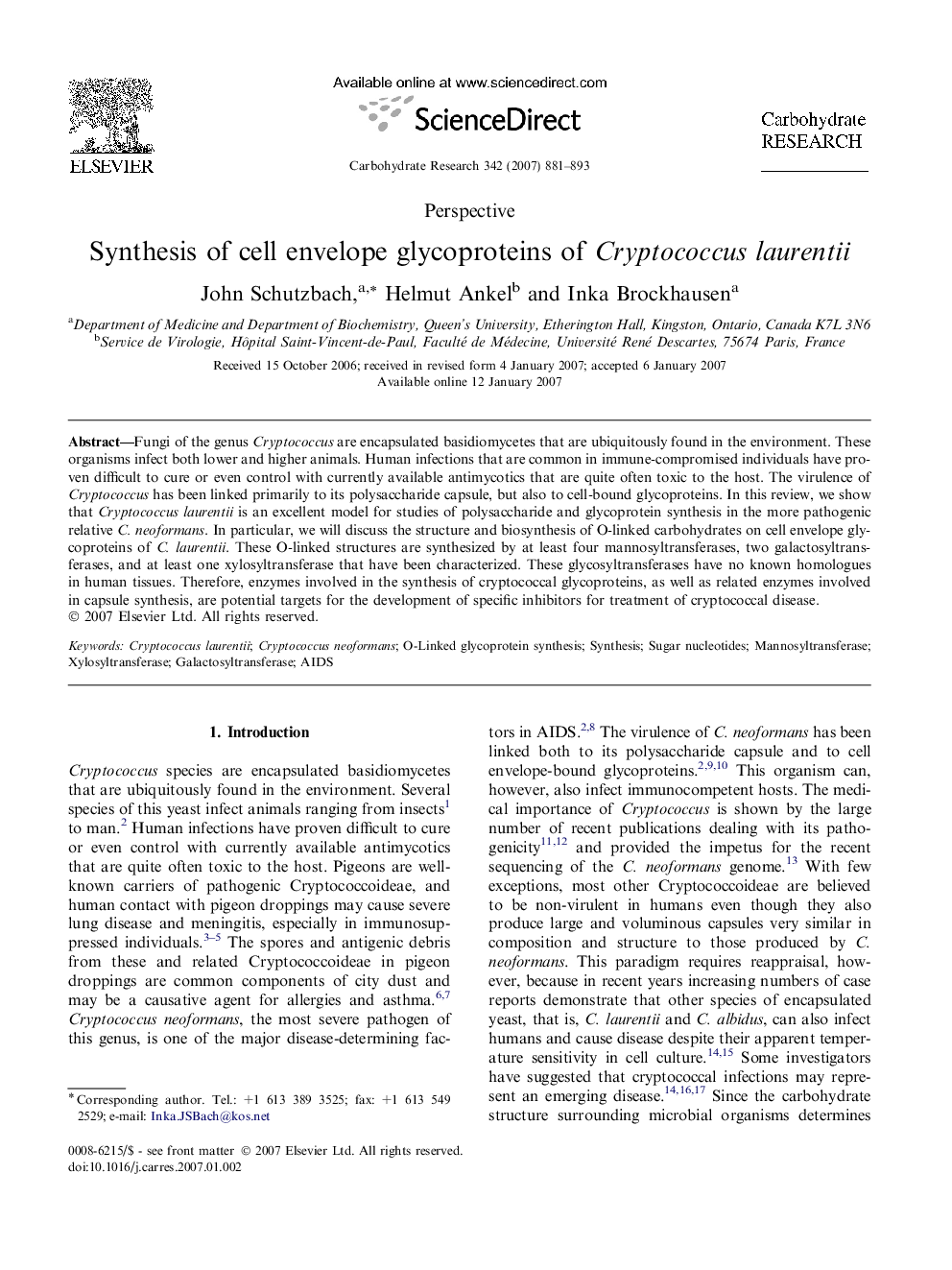| Article ID | Journal | Published Year | Pages | File Type |
|---|---|---|---|---|
| 1389019 | Carbohydrate Research | 2007 | 13 Pages |
Abstract
Fungi of the genus Cryptococcus are encapsulated basidiomycetes that are ubiquitously found in the environment. These organisms infect both lower and higher animals. Human infections that are common in immune-compromised individuals have proven difficult to cure or even control with currently available antimycotics that are quite often toxic to the host. The virulence of Cryptococcus has been linked primarily to its polysaccharide capsule, but also to cell-bound glycoproteins. In this review, we show that Cryptococcus laurentii is an excellent model for studies of polysaccharide and glycoprotein synthesis in the more pathogenic relative C. neoformans. In particular, we will discuss the structure and biosynthesis of O-linked carbohydrates on cell envelope glycoproteins of C. laurentii. These O-linked structures are synthesized by at least four mannosyltransferases, two galactosyltransferases, and at least one xylosyltransferase that have been characterized. These glycosyltransferases have no known homologues in human tissues. Therefore, enzymes involved in the synthesis of cryptococcal glycoproteins, as well as related enzymes involved in capsule synthesis, are potential targets for the development of specific inhibitors for treatment of cryptococcal disease.
Keywords
Related Topics
Physical Sciences and Engineering
Chemistry
Organic Chemistry
Authors
John Schutzbach, Helmut Ankel, Inka Brockhausen,
